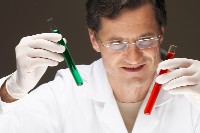Facts About Medical Inventions from History
Medical Trivia Some of the earliest evidence of medical instruments comes from Babylon c.1800 B.C. A surgeon’s use of a bronze knife is referenced in Hammurabi’s Code in which it states that if a patient dies due to the surgeon’s use of the knife, the surgeon’s hand “shall be cut off.”
Some of the earliest evidence of medical instruments comes from Babylon c.1800 B.C. A surgeon’s use of a bronze knife is referenced in Hammurabi’s Code in which it states that if a patient dies due to the surgeon’s use of the knife, the surgeon’s hand “shall be cut off.”
Chinese Emperor Shen Nung developed a guide for the use of herbal medicines in 2900 B.C.
The Etruscan people of central Italy were the first to use false teeth in c.700 B.C. Early dentists used gold straps to attach animal teeth to their patients’ mouths. Porcelain false teeth did not arrive on the scene until c.1770 in France.
Italians were the first people to use eyeglasses in 1286. Venicians, known for their glass-making expertise, made small lenses for the eyes. In 1784 Benjamin Franklin invented bifocals by combining two lenses in a single frame.
The people of Italy used the first condoms in 1560 to avoid disease.
Edward Jenner, an English doctor, invented vaccination by deliberately injecting very small doses of both cowpox and smallpox into a young boy who survived, so proving the doctor’s hypothesis of immunity.
In 1792 Dominique-Jean Larrey invented the ambulance by attaching a light vehicle to a pair of horses to replace the cumbersome horse carts that previously carried the wounded.
The first use of anesthetics came in 1844 in the field of dentistry when dentist Horace Wells allowed himself to have a tooth pulled while given a dose of nitrous oxide, otherwise known as laughing gas.
The ophthalmoscope was invented in Germany in 1851 by Hermann von Helmholtz and allowed doctors to examine the inside of the eye.
Aspirin was invented in 1897 by researchers Felix Hoffman and Hermann Dreser.
In 1896, Italian doctor Scipione Riva-Rocci invented the sphygmanometer to give a precise reading of blood pressure.
In 1907 Clemens von Pirquet developed a skin test for tuberculosis.
The use of insulin to treat diabetes came in 1921 when two Canadian biochemists extracted the hormones from the pancreases of pigs.
Earle Dickson invented the Band-Aid in 1921 while employed by Johnson & Johnson.
Alexander Fleming discovered penicillin, the first antibiotic drug, in 1928.
The world’s first heart-lung machine was first used in 1953 by John Heynsham Gibbon during the first open-heart surgery on a human.
Various researchers contributed to the first ever oral contraceptives in 1954.
